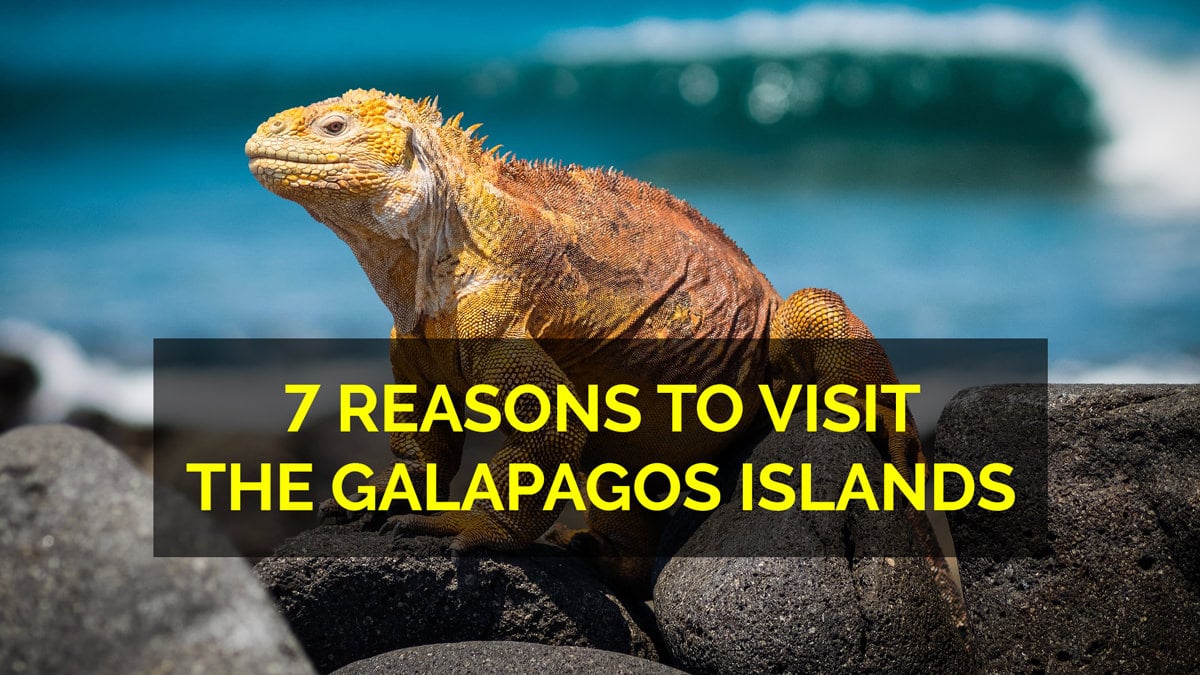Last updated on December 17th, 2021
The Galapagos Islands are on a lot of travel bucket lists — and for good reason.
So, why visit the Galapagos Islands?
It’s unlike any other destination or travel experience on Earth, and many who come often find themselves wanting to visit again. Most people know the Galapagos Islands because of Charles Darwin. But, the truth is, even if you have no interest in him, you’ll probably have an unforgettable adventure on the islands.
You can find the Galapagos Islands about 1,000 kilometers west of mainland Ecuador.
The Galapagos is a remote archipelago composed of volcanic islands that are simply teeming with biodiverse nature and wildlife. That’s not necessarily unique — there are many other places on the planet with biodiversity and amazing sights to see, after all. But, what sets this archipelago apart is that it’s one of the very few places on Earth where most of its animal residents don’t fear humans at all.
If you’re on the fence and you haven’t fully decided whether you want to visit this destination just yet, this list of the top reasons to visit the Galapagos might just help you make up your mind.
Pin for Later
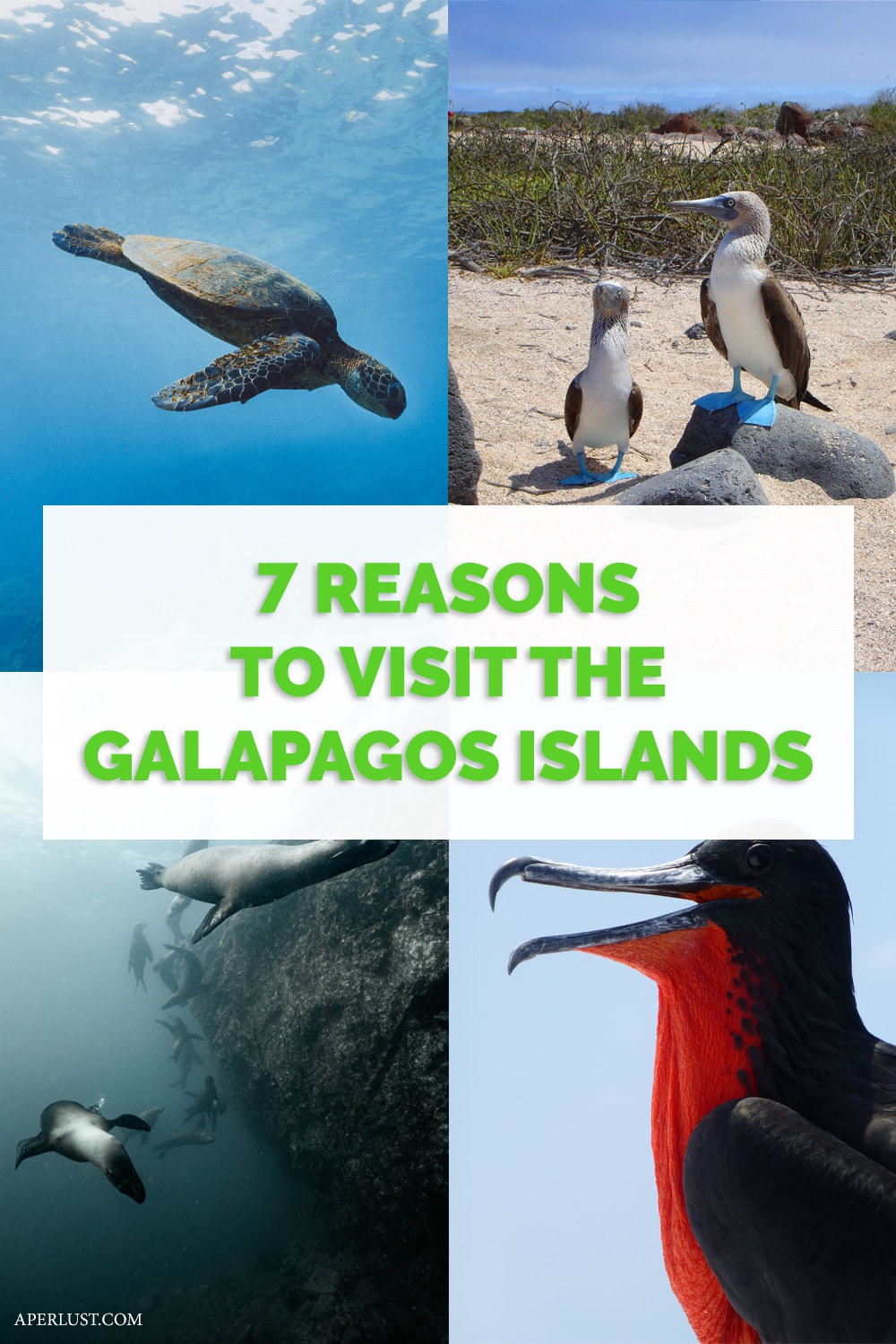
Why Visit the Galapagos Islands?
1. Charles Darwin: Theory of Evolution and Natural Selection

Although the discovery of the Galapagos Islands in 1525 was a happy little accident, it wasn’t until 1839 that the archipelago found wider fame.
In 1839, The Voyage of The Beagle was published as Darwin’s Journal and Remarks. The book covered Charles Darwin’s experiences in the ship HMS Beagle’s second expedition.
It was during this very expedition to the Galapagos that Darwin had some extraordinary adventures. And, it was during these adventures that he noticed how similar species might have different genetic adaptations depending on the ecosystem they lived in. This realization led to the conception of Charles Darwin’s famous Theory of Evolution and Natural Selection.
These days, when you visit the Galapagos Islands, you can visit the various ecosystems to see the animal’s genetic adaptations with your own eyes.
For example, as you island-hop, the globally famous Galapagos tortoises will look unique depending on where you go. The tortoises have different neck lengths, shell shapes, and other adaptations that make feeding on vegetation easier.
Another example, there are 18 bird species (Darwin’s finches) with different adaptations like distinct beak sizes and distinct feeding behavior.
2. Explore Unsoiled, Protected Ecosystems
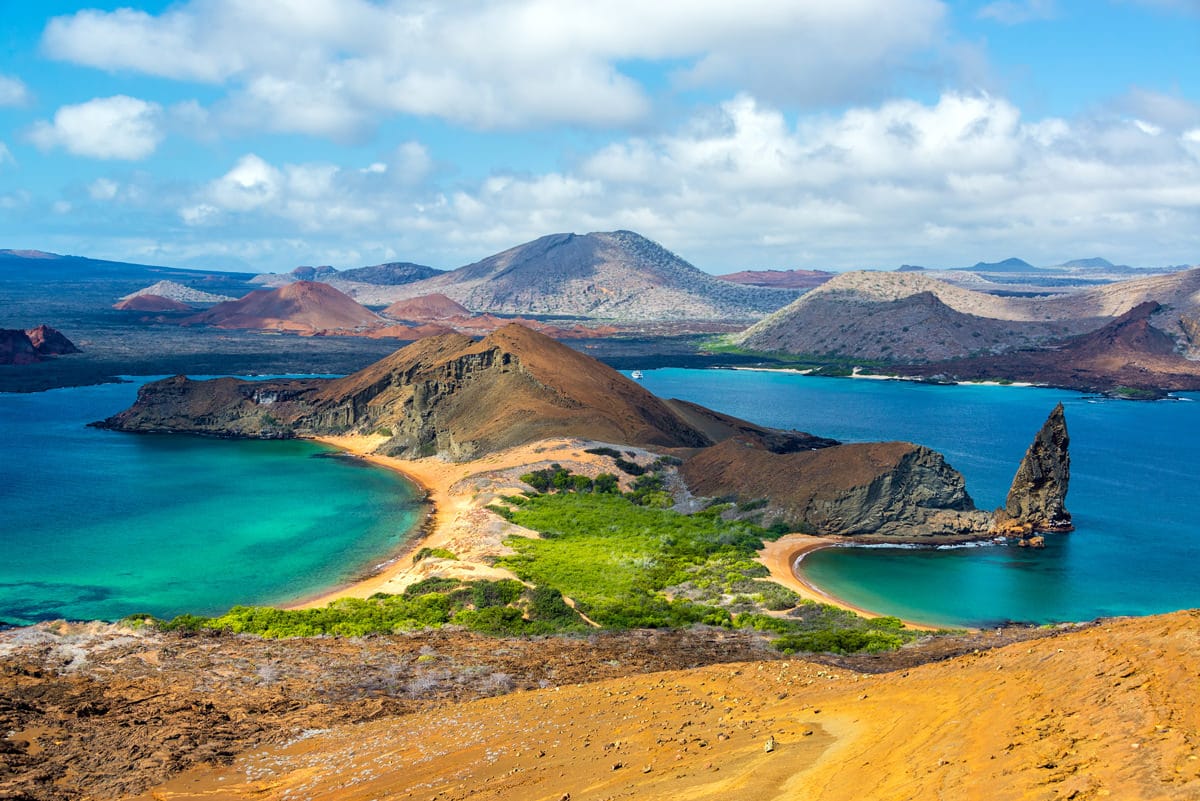
Back in the day, the Galapagos archipelago was quite popular with the pirates. The pirates hid in the islands after they attacked Spanish ships (galleons). While there, the plunderers would go after the tortoises for their meat.
Whalers also spent a lot of time at the Galapagos Islands in the 17th-18th centuries. Despite its popularity then, any attempts people made to colonize the islands pretty much failed. To this day, many Ecuadorians consider the Galapagos cursed.
These days, the Galapagos Islands — or most of them anyway — are still relatively uninhabited. Because of this, the ecosystems are unspoiled and practically pristine. There are many tourism laws and restrictions in place to protect the wildlife and the archipelago environment. In 1978, the Galapagos Islands was named a world heritage site by UNESCO. To this day, a little over 97% of the Galapagos is national park and strictly regulated.
As a traveler looking to explore these biodiverse ecosystems, you might be concerned about the impact of these restrictions on your adventure.
Fortunately, you’ll still be able to have a great time exploring the islands and enjoying an experience not too different from what Charles Darwin described in his book almost two centuries ago.
Despite the restrictions, there are still many things you can do and places you can visit, such as trails, beaches, and forests.
3. Clear Turquoise Beaches
If beaches are a must at every vacation destination, you’ll be happy to know that there are many pristine, turquoise beaches at the Galapagos Islands.
Gardner Bay, Espanola Island
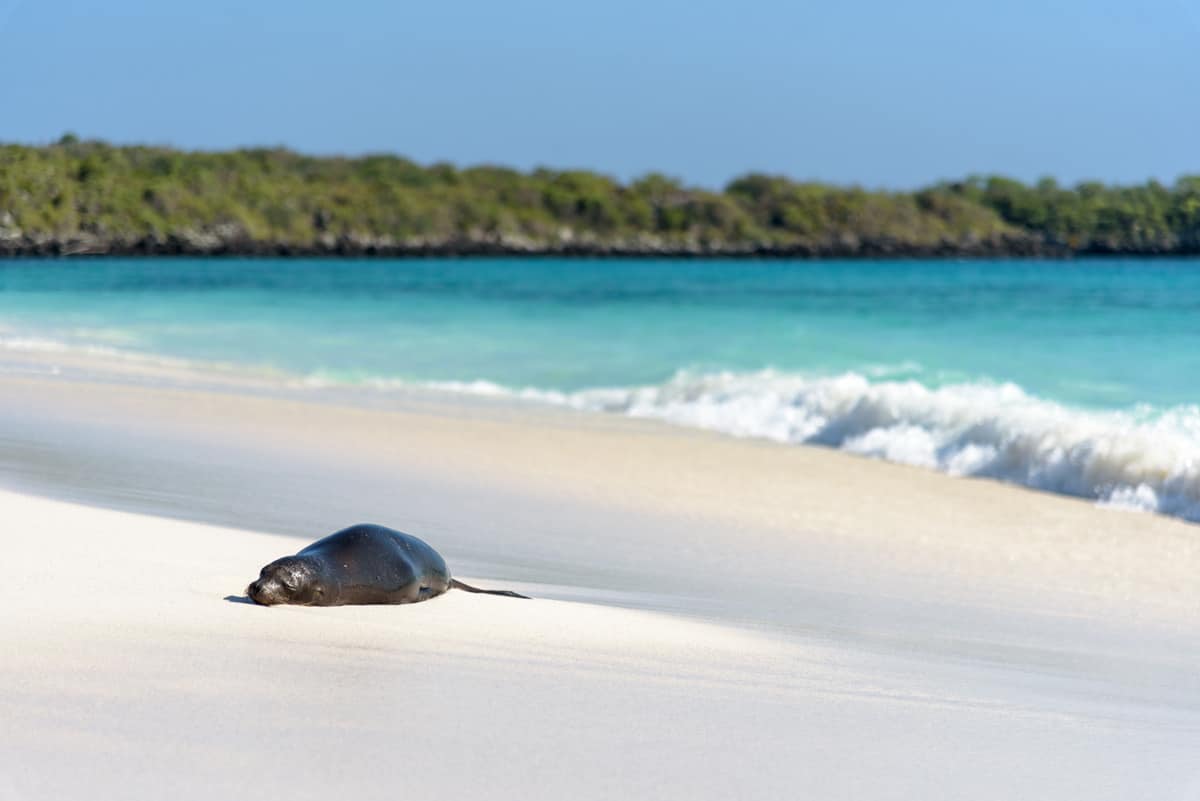
Gardner Bay is world-renowned for being one of the best beaches on the planet, with stunning white sand and palm trees. At Gardner Bay, red lava lizards hang out on the shore, and you can go snorkeling and be among sea lions and stingrays.
Tortuga Bay, Santa Cruz Island

Tortuga Bay is known for all the sea turtles that lay eggs on the long stretch of beach. You can make a great day trip out of visiting this beach, as it’s only a short walk from the town. In the area, you’ll find sea lions, marine iguanas, flamingos, and pelicans.
Puerto Villamil, Isabela Island
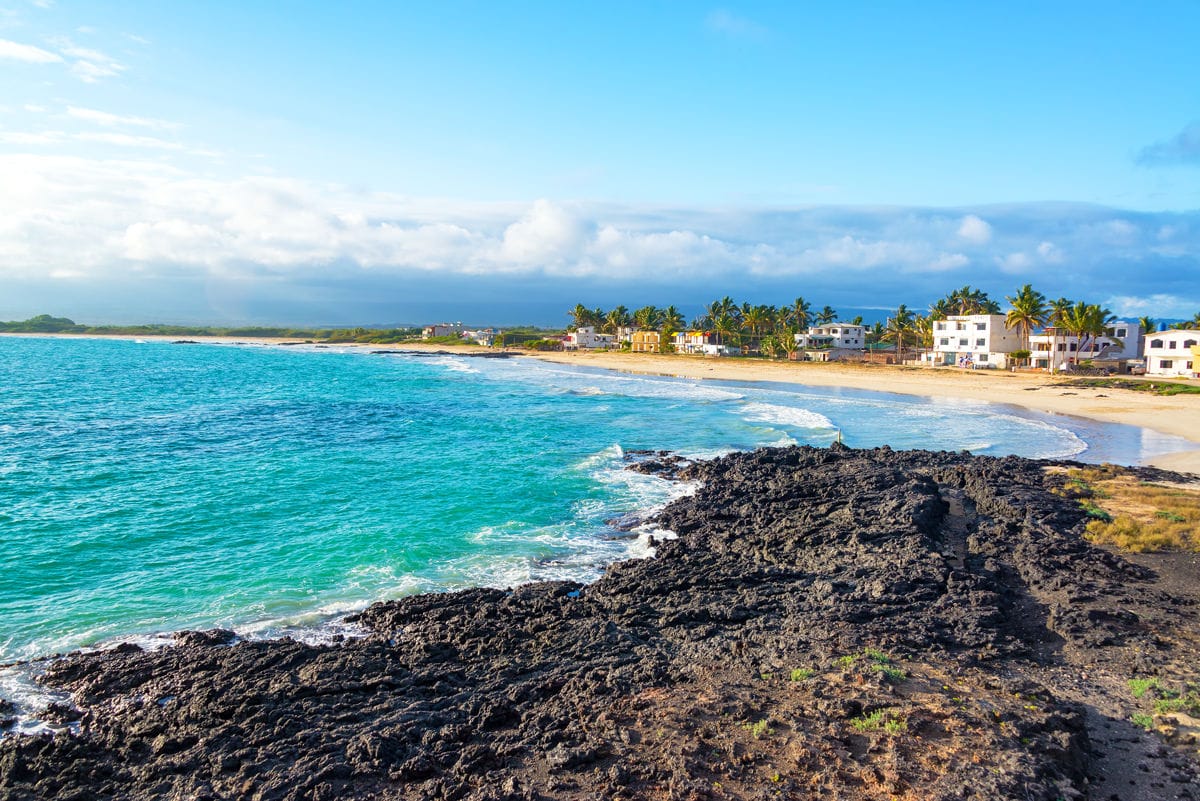
Puerto Villamil is home to the residents of the Galapagos Islands. But just because it’s the port doesn’t mean it’s a busy area — it’s still a laid-back sleepy town with a stretch of white sand beach. A tortoise breeding facility focused on preserving the five tortoise species on the islands is nearby.
4. Water Activities on The Galapagos Islands
Because the Galapagos is an archipelago, water-related activities are pretty popular in the area. Here are some of the things that you can do while on your adventure to the islands:
- Surfing – Although the Galapagos Islands aren’t necessarily known for being a surfer’s paradise, you’d still be surprised to know that the archipelago features waves all year round. If you want to have an adventure that accommodates surfing, the best months to visit would be from December to February. You can visit San Cristobal Island, which is best known for surfing tourism. It can be challenging to get to the surfing areas and waves at times — sometimes you might need to go on a hike, a long walk, or take a boat — but in the end, it’s worth it.
- Kayaking – The Galapagos is an excellent place to kayak. There aren’t any large tourist boats (they’re further away or cruising) to worry about, no crowds, and you’ll be right there with sea turtles and wildlife as you serenely paddle the waters. You might even run into some dolphins. Kayaking can be quite a physical activity, but thankfully you can coast along the shore, going at your own pace and taking breaks when necessary.
- Snorkeling – If you love snorkeling, you might love the Galapagos since it’s world-renowned as one of the best snorkeling vacation destinations on Earth. The waters at the archipelago are clear and often calm, making the Galapagos a fabulous place for snorkelers regardless of their experience level. Here, you’ll find sea turtles, black and whitetip reef sharks, stingrays, tropical fish, giant fish, sea birds, sea lions, and even the Galapagos penguins occasionally. If you aren’t content snorkeling from the beach, you can board one of the best Galapagos cruises and stop at some of the uninhabited islands to see some of the secret snorkeling spots.
- Scuba diving certification with SNSI or PADI – Scuba diving is another item on many people’s bucket lists. Who wouldn’t want to swim deeper than they’ve ever swam before so they can see things only the ocean can show them? Diving in the Galapagos is a fantastic experience to see some unique geologic formations and lovely, vibrant sea creatures. If you’ve never dived before, you can always get your scuba diving certification on the Galapagos Islands, as both PADI and SNSI offer certification courses there.
- Diving liveaboard to Darwin and Wolf Islands – If you’re a more experienced diver looking for a bigger adventure at the archipelago, you can join a diving liveaboard cruise that will allow you to dive with whale sharks and hammerhead sharks. You can choose from an itinerary of 7 days, 10 days, or the full 14 nights (including other smaller dive locations). It’s quite expensive, but the exclusive liveaboards feature high standards and complete amenities and facilities. You don’t have to worry about scheduling problems, either — liveaboard cruises are available all year round. You may have to check the season when you’re planning to visit to see specific marine life.
5. Enjoy Bird Watching
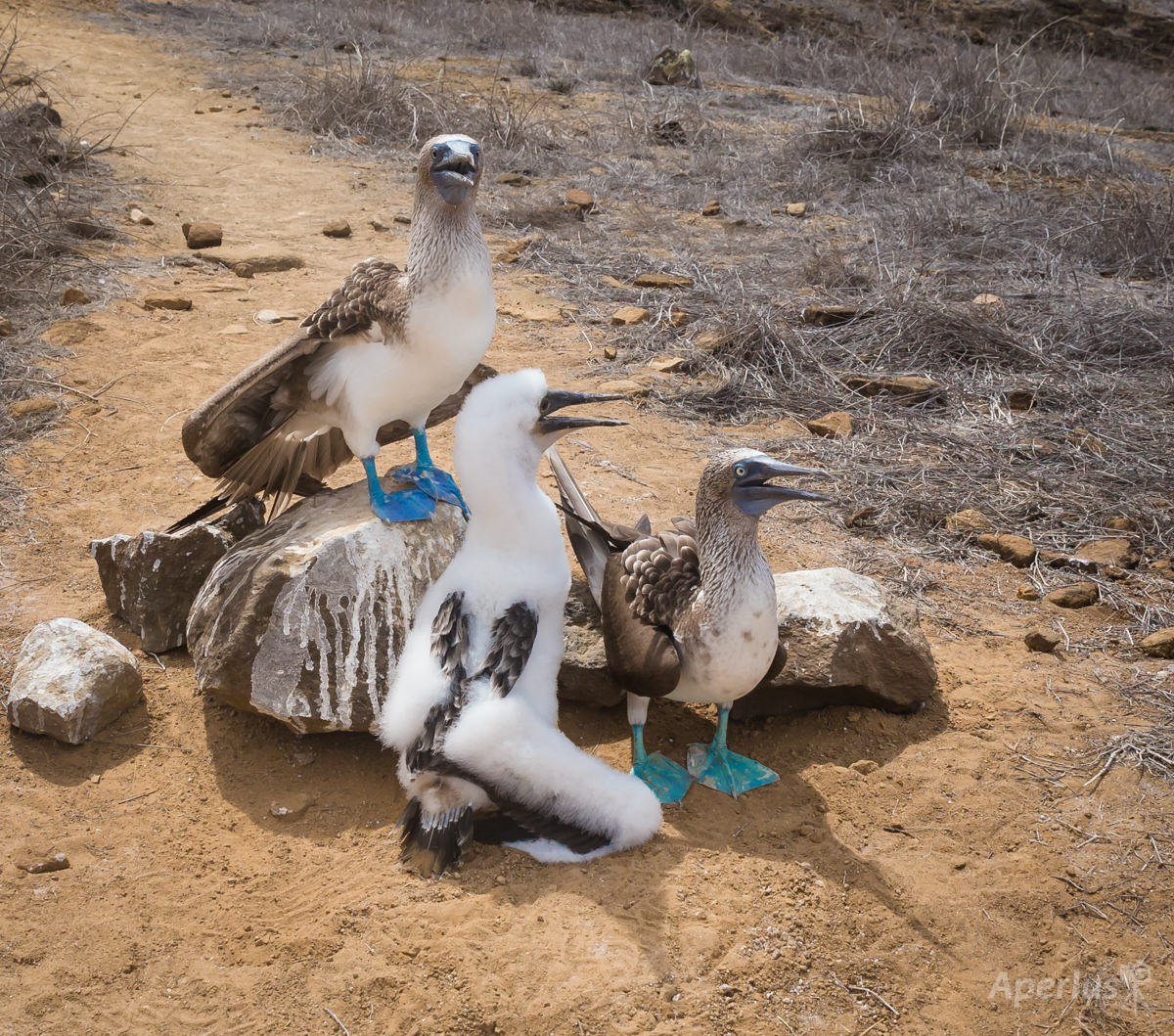
We’ve established there’s plenty of unique wildlife on the Galapagos archipelago, but one of the best things you’ll find here is the diverse population of birds.
If you love bird watching, you’ll enjoy the many species that call the islands their home. Many bird watchers have found the Galapagos one of the best places for the hobby, considering there are 175 unique species on the islands. Twenty-six of these species are endemic (native) to the Galapagos. You’ll often be able to have an up-close experience reminiscent of nature documentaries.
If you’re not a big fan of birds, you might still enjoy seeing the vibrant, quirky, and unique birds on the archipelago that you most likely struggle to see anywhere else. Here are some of the bird species found on the islands:
- Blue-Footed Boobies – These birds look unique with their adorable blue feet. They’re one of the most popular species you’ll find on the islands for obvious reasons. They have blue feet, sure, but it’s their quirky mating dances and clown-like demeanor that make them a huge hit with the crowds. The blue-footed boobies love diving from the sky straight into the ocean for food. They’re also commonly found in colonies at their nest grounds in North Seymour and San Cristobal Islands.
- Red-Footed Boobies – The red-footed boobies are the smallest booby species on the archipelago. They are also the rarest. These birds are easy to recognize because of their red feet but also their blue bills. This species nests in shrubs and trees, and spend almost all of their time fishing for fish or squid. These birds can dive as deep as 30 meters underwater for their prey.
- Frigate Birds – It’s hard not to recognize a frigate bird right off the bat, thanks to their black coloring and puffed-out red chests on males. Nicknamed by the Spanish as “pirate birds,” frigate birds are somewhat bullies. They chase birds of other species (like boobies) and shake them by their tail feathers until they regurgitate their food. Then, the frigate birds will eat this regurgitated food. Frigate birds fly around like pterodactyls, following boats and yachts around.
- Galapagos Penguins – Yes, there are penguins living at the equator. This endemic species is on Bartolome, Fernandina, and Isabela Islands. You might even be able to see them while you’re snorkeling. They’re the only penguin species found north of the equator, though only slightly north.
6. Galapagos Tortoises
No trip to the Galapagos is complete without checking out the giant tortoises on the island. There are 13 living species on the archipelago, and they are the longest-living land vertebrates reaching ages over a hundred years on average. The oldest lived to be 175. The Galapagos tortoises are also the largest on the planet. Some get as heavy as half a ton and as long as five feet. These tortoise species are now protected, with only 15,000 remaining in the wild (a far cry from the 250,000 population they once had).
7.Help the Economy During the Pandemic
The COVID-19 pandemic has stricken and affected just about everyone on the planet. By visiting the Galapagos Islands (while observing precautions, of course), you can help the local economy in the area. In addition, the fees and permits paid go towards the Galapagos National Park and help preserve this jewel of South America.
Conclusion – A Galapagos Adventure Will Be Unforgettable
There are many reasons why your Galapagos adventure might be unforgettable. The sheer number of activities you can do on the island almost ensures you can tailor your vacation to be perfect for your taste.
Why visit the Galapagos Islands? Aside from water activities and seeing all the wildlife, you might even be able to hone all of your photography skills in one go — you can do landscape, underwater, nature, and portrait photography all in one place. You can even visit Kicker Rock, where you can practice photography, snorkel, and dive.
A trip to the Galapagos can be precisely what you want it to be — and you can even practice your Spanish by speaking with the natives while you’re there.
And though the costs can add up, the ROI and experience from the Galapagos are worth it. Furthermore, it’s possible to visit the Galapagos on a budget.

